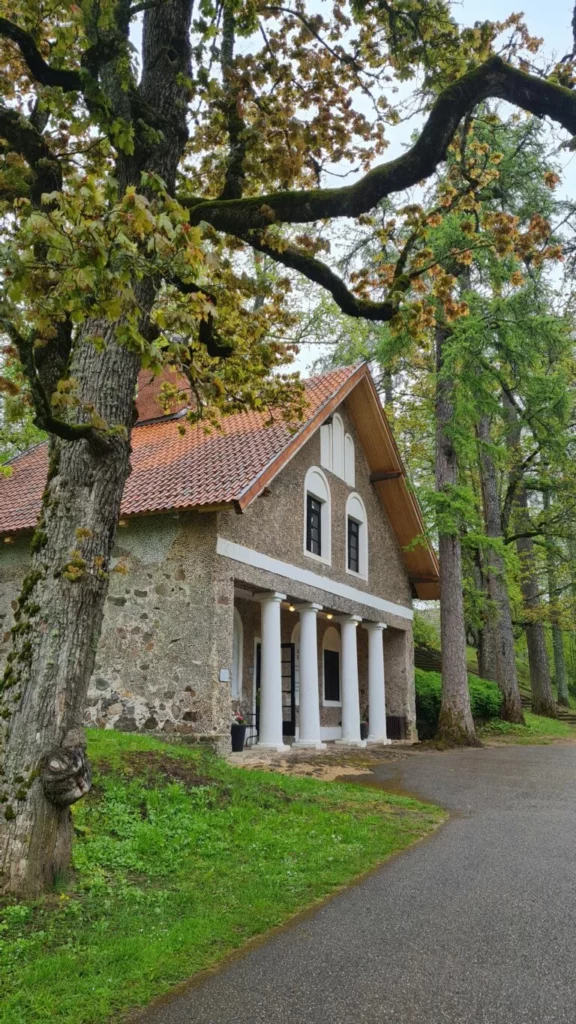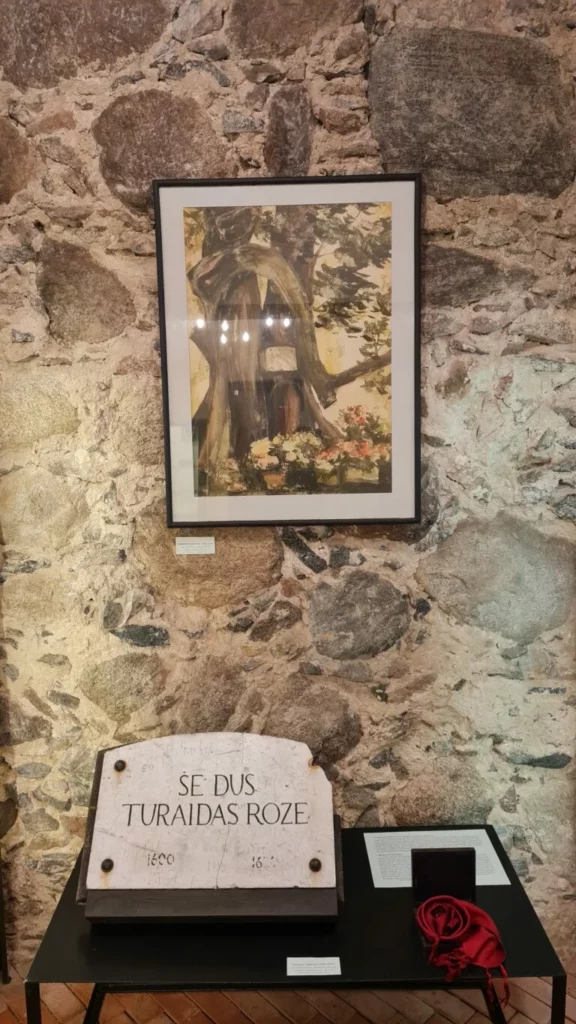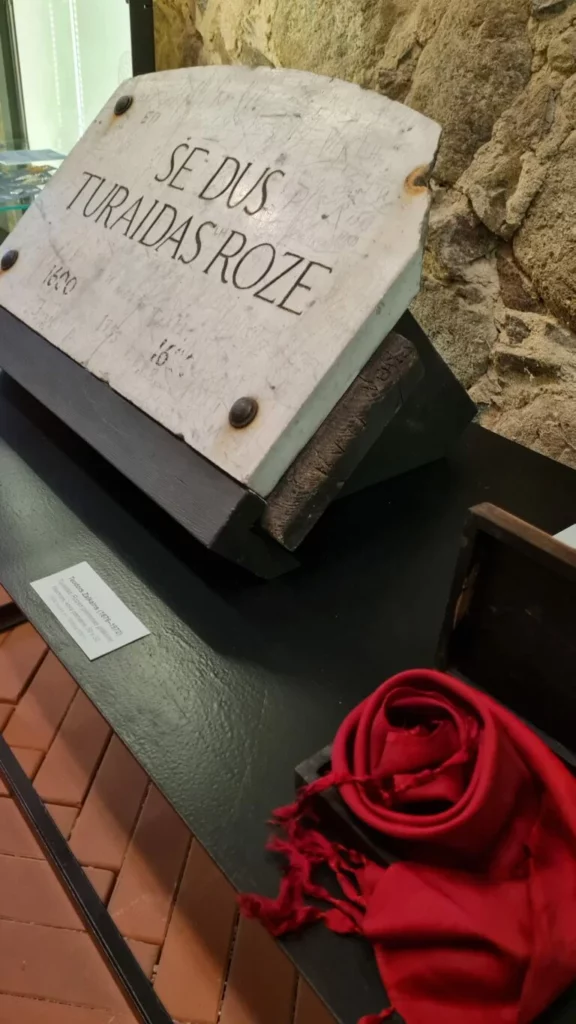The Turaida Museum Reserve invites you to visit the former Turaida Manor drying kiln, where the museum will introduce collection items related to the love story of the Rose of Turaida – a girl named Maija Greif, who lived in Turaida at the beginning of the 17th century.
With the exhibits changing periodically, visitors will have the opportunity to look into the story of the Rose of Turaida through the prism of the museum’s collection items. At the beginning, two works of outstanding local artists are exhibited – the painting “The Rose of Turaida” by the landscape painter and long-time chief artist of Sigulda, Voldemārs Gudovskis, and the Turaida Rose memorial plaque by the sculptor Teodors Zaļkalns.
Currently, the museum reserve’s collection contains 96,500 items, including many unique works of art related to the theme of the Rose of Turaida, photographs, costumes and sketches from various performances, postcards, books, etc. The art collection of the Turaida Museum Reserve includes works by painters Oskars Vīndedžs, Pēteris Postažs, sculptors Kārlis Baumanis and Aivars Gulbis, and graphic artist Pēteris Upītis, whose work and creative ideas were inspired by the story of the Rose of Turaida.
The idea of the open collection gallery is to show the museum’s collection values over time, tell stories and provide visitors with the opportunity to get to know the rich heritage of the Turaida Museum Reserve.
The kiln building is permeated with a historical atmosphere. The former Turaida Manor kiln was built in the second quarter of the 19th century. Initially a blacksmith’s shop, later rebuilt as a grain kiln (a specialized oven used to fire, bake, harden, or dry materials at high temperatures), it retained its function in the 1920s and 1930s. Facts show that the building was also used for other purposes – around 1928, a buffet was set up there, selling fried sausages at the local parish events, however, grain drying continued after World War II until it was discontinued in the mid-1950s. The building was used as a warehouse for the soft drink kiosk close by.
In 1971, the Sigulda Consumers’ Association established the café “Turaida” in the former kiln. The author of the project, architect Jānis Mednis, preserved the architectural features characteristic of the building. References to historical styles are visible in the interior design. Wall paintings based on the motifs of the legend of the Rose of Turaida have survived to this day. The interior designers and the authors of paintings, furniture and lighting objects were Aina and Auseklis Ozoliņi. The café was popularly known as “Zirnīti” (a little pea) due to its menu – the traditional Latvian dish of grey peas with bacon, beer and Riga Black Balsam. Restoration works of the kilns’ ceiling will begin sometime during this year.
Starting this spring, “Baltu Rotas” offer a story about the history, nature and inspiration of the Rose of Turaida in jewelry in this building. The collection of silver and rose-bronze jewelry was created in honor of the 400th anniversary of the Rose of Turaida, and continues to delight their wearers. Everyone has the opportunity to purchase jewelry that was worn by the locals in this area more than 1,000 years ago. The originals of the jewelry can be seen in the exhibitions of the Turaida Museum Reserve.
Photo: Maira Dudareva



